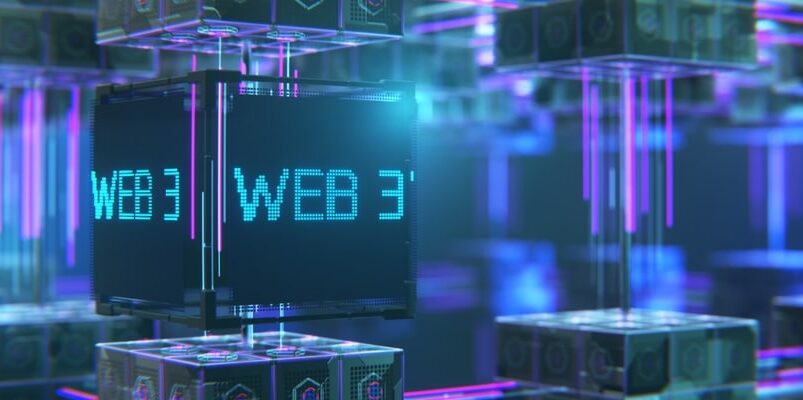Web 3.0 Explained: A Beginner’s Guide to the Decentralized Internet Landscape

Successive versions have marked the evolution of the internet, each bringing its expectations and uncertainties about its offerings. This guide addresses your inquiries regarding Web 3.0.
Throughout history, new technological breakthroughs, particularly in the Internet domain, have elicited both enthusiasm and apprehension. Each evolution of the internet has consistently ignited curiosity and anticipation among the public. Many are eager to embrace the improvements over earlier versions yet need to be more cautious of potential shortcomings.
Hence, understanding Web 3.0’s potential, the hurdles it faces, and the issues it resolves is essential, as this guide elaborates.
Web 3.0 Insights
Web 3.0 is an advancement from its predecessor, Web 2.0, anchored in blockchain technology. It prioritizes decentralization, clarity, and an improved user journey.
Web 3.0 marks the forthcoming stage of online services for platforms and apps, enabling richer interactions between individuals and information via more advanced and widespread instruments.
This era combines the user-focused features of Web 1.0 with the modern capabilities of Web 2.0, aiming to develop broader, more cohesive, and transparent platforms.
The Evolution from Web 1.0 to Web 3.0
The digital realm has transformed since the basic Web 1.0 days in the late 20th and early 21st centuries. After Web 1.0, Web 2.0 emerged, the prevalent version at the time of this record. This phase introduced heightened user interaction, enhanced social ties, and a surge in user-contributed content, surpassing the limitations of Web 1.0.
Web 1.0 served primarily as a static information hub, allowing users to consume content without much interaction. This was followed by Web 2.0, a more interactive platform that fostered user collaboration. It’s anticipated that Web 3.0 will revolutionize website design and user engagement.
Specifically, Web 1.0, often called the “read-only web,” was the internet’s inaugural phase, primarily serving as a platform for businesses to display information, with users mainly searching and reading. Technologies such as IP, HTTP, URI, and HTML were foundational to this era.
In contrast, Web 2.0, representing the Internet of the 21st century, emphasizes user interaction. This version paved the way for platforms like WhatsApp and Facebook, promoting user engagement and collaboration.
Lastly, Web 3.0, as previously mentioned, is the impending phase of internet services grounded in blockchain technology. While its full realization is still in progress, it promises unique functionalities, enabling more intricate interactions between users and data. Central to Web 3.0 are the principles of decentralization, transparency, and superior user experience.
Web 3.0 and the Metaverse: An Overview
Web 3.0 and the metaverse stand out as a notable technological evolution. Web 3.0 marks the next stage of the Internet, defined by its decentralized, widespread, and universal data network. This facilitates smooth interactions for both individuals and machines with information. Conversely, the metaverse offers an expansive, three-dimensional digital realm where individuals can interact in real time.
The word “metaverse” originates from combining “meta” with “universe,” indicating a series of linked virtual reality spaces. Both the metaverse and Web 3.0 underscore the concept of decentralization, with a focus on elevating user interactions.
Advantages of Web 3.0
Equitable Value Distribution: Web 3.0 promotes an even value distribution among businesses. This approach empowers startups and smaller enterprises to provide services like finance, insurance, and banking, previously exclusive to more giant corporations in the Web 2.0 era.
Enhanced Consumer Privacy: Web 3.0’s foundational shift towards blockchain technology ensures robust consumer privacy. With the decentralization of data on the blockchain, data transparency is achieved, and the risk of breaches is significantly reduced.
Additional benefits encompass:
- Continuous service without disruptions.
- Interoperability across platforms.
- A fortified network.
- Streamlined marketing processes.
- Improved search and browsing experiences.
- Efficient communication channels.
Potential Hurdles for Web 3.0
While Web 3.0 is still in its nascent stages, potential challenges include:
- Handling extensive data volumes.
- Addressing uncertainties inherent to the vastness of the internet.
- Potential incompatibility with older devices.
Web 3.0 Application Instances
Applications developed based on Web 3.0 standards encompass DeFi apps, NFTs, and Decentralized Autonomous Organizations (DAOs). Other notable applications include:
- Sapien
- Steemit
- onG.Social
- PROPS Project
- e-Chat
- EOSFinex
Conclusion
Web3 signifies a decentralized progression of the internet, emphasizing user ownership. This contrasts with the current Web2 framework, where significant centralized organizations primarily accrue the Internet’s financial advantages. Even though Web3 is in its nascent stages, it holds the potential to shape the investment landscape and the broader economy in future years.
DISCLAIMER: It's essential to understand that the content on this page is not meant to serve as, nor should it be construed as, advice in legal, tax, investment, financial, or any other professional context. You should only invest an amount that you are prepared to lose, and it's advisable to consult with an independent financial expert if you're uncertain. For additional details, please review the terms of service, as well as the help and support sections offered by the provider or promoter. While our website strives for precise and impartial journalism, please be aware that market conditions can shift unexpectedly and some (not all) of the posts on this website are paid or sponsored posts.









